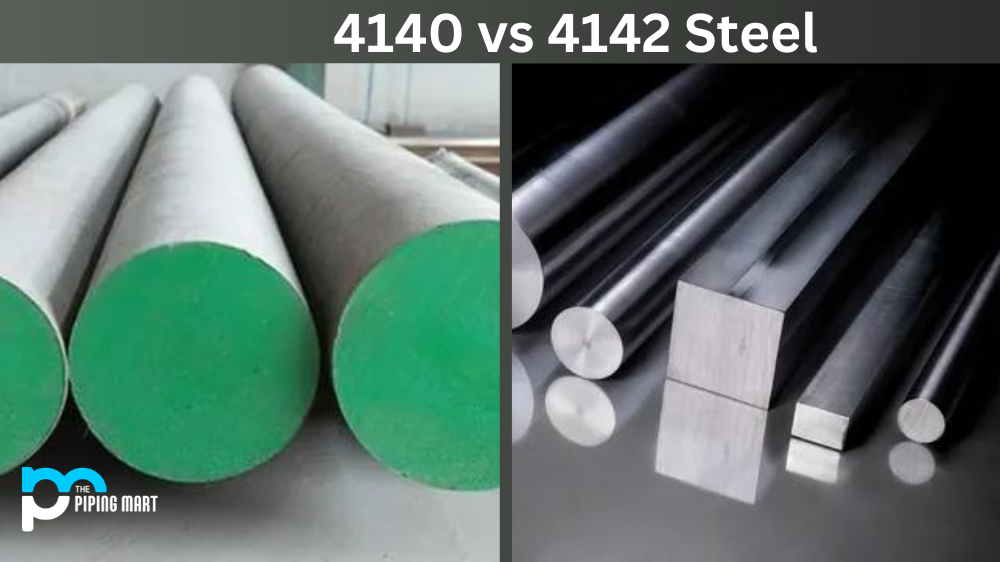Steel is a crucial building material used in countless industrial applications worldwide. Among the various types of steel, 4140 and 4142 are two of the industry’s most widely used and popular alloys. These two types of steel are often compared due to their similarities and differences, and in this blog post, we will dive deep into the differences between 4140 and 4142 steel.
Compared to other steel alloys, 4140 and 4142 are known for their exceptional strength, toughness, and durability. Both contain chromium and molybdenum, significantly improving their hardenability, wear, and corrosion resistance. The main difference between the two steel alloys is the amount of carbon present in their chemical composition.
Difference Between 4140 and 4142
4140 and 4142 are both chromium-molybdenum low-alloy sheets of steel. They share many of the same properties but have some key differences. Here’s a look at the key differences between these two steel alloys:
Composition
4140 steel contains 0.40% carbon by weight, while 4142 includes a slightly higher amount of carbon at 0.42%. This may seem like a minuscule difference, but it can significantly affect the physical properties and performance of the steel. The higher carbon content of 4142 makes it slightly more difficult to weld than 4140 and gives it a higher tensile and yield strength.
Applications
Another difference between the two alloys is their applications. 4140 Steel is commonly used in construction, automotive, and industrial settings as it can be easily machined, welded, and heat-treated to obtain the desired mechanical properties. 4142 steel, on the other hand, is primarily used in manufacturing equipment where strength and durability are essential such as in gears, shafts, and other components that experience high-stress levels.
Cost
Despite their many similarities, one notable difference between 4140 and 4142 is their cost. Due to the slightly higher carbon content, 4142 is often more expensive than 4140. When selecting steel, consider your specific application, budget, and required properties.
Tensile Strength
4140 steel has a higher tensile strength than 4142 steel. The exact numbers vary depending on the precise composition of each alloy, but 4140 steel typically has a tensile strength of around 95 ksi. In comparison, 4142 steel typically has a tensile strength of about 100 ksi.
Yield Strength
4140 steel also has a higher yield strength than 4142 steel. Again, the exact numbers will vary depending on the composition of each alloy, but 4140 steel typically has a yield strength of around 65 ksi, while 4142 steel typically has a yield strength of about 70 ksi.
Hardness
4140 steel is generally more complex than 4142 steel. The exact numbers will vary depending on the composition of each alloy and the heat treatment that is applied, but in general, 4140 steel will be more challenging than 4142 steel.
It’s important to note that both 4140 and 4142 steels are highly versatile and suitable for various industrial applications. When choosing between the two, it is essential to understand your needs and requirements and find the one that satisfies them.
Conclusion
In conclusion, while they may have similar physical and mechanical properties, crucial differences between 4140 and 4142 make them better suited for different applications. Whether you’re looking to build heavy-duty machinery or construct a building, selecting the suitable steel alloy can make all the difference. Understanding the differences between 4140 and 4142 Steel allows you to make informed decisions that will benefit your projects and improve your productivity.

Hey, I’m Krutik, a casual blogger expert in the metal industry. I am passionate about providing valuable information to my readers. With a background in engineering and construction, I like playing Cricket & watching Netflix shows in my free time. Thank you for visiting my blog, and I hope you find my information helpful!




